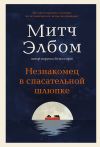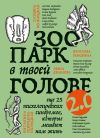Текст книги "Английский язык для студентов заочной формы обучения"

Автор книги: Татьяна Минакова
Жанр: Иностранные языки, Наука и Образование
сообщить о неприемлемом содержимом
Текущая страница: 5 (всего у книги 14 страниц) [доступный отрывок для чтения: 5 страниц]
2.3.3.1 Задание 1. Прочитайте и запомните следующие слова и словосочетания
marketing research – исследование маркетинга;
marketing manager – управляющий маркетингом;
need – нужда, нуждаться;
to tabulate – составлять таблицу;
to take charge of – руководить;
to handle – обрабатывать (документы);
top manager – главный управляющий;
framework – структура;
approach – подход;
to assume – предполагать;
guess – догадка;
relationship – связь;
orderly – точный;
to define – определять;
data – данные;
available – имеющийся в наличии;
quantitative – количественный;
to set up – создавать;
recurring – появляющийся;
product – продукт; товар, изделие;
tangible – осязаемый, материальный;
item – предмет;
to own – владеть;
deed – дело, акт;
to perform – выполнять;
to provide – обеспечивать;
party – участник, сторона;
to develop – разрабатывать;
to meet – удовлетворять (потребности), соответствовать;
to survive – выживать;
life cycle – жизненный цикл;
failure – неудача, крах, банкротство;
brand – марка (изделия);
branding – присвоение товару марочного названия;
trademark – торговая марка, торговый знак;
legal term – юридический термин;
craft guild – ремесленная гильдия;
merchant guild – торговая гильдия;
output – продукция;
purchase – покупка, покупать;
sales volume – объем реализованной продукции;
costs – издержки, затраты;
failure – неудача.
2.3.3.2 Задание 3. Прочитайте тексты А, В, С, переведите их письменно
Тext А. Marketing Research
The marketing concept says that marketing managers should meet the needs of customers. This means marketing managers have to rely on help from marketing research – procedures to develop and analyze new information to help marketing managers make decisions.
Most large companies have a separate marketing research department to plan and carry out research projects. These departments often use outside specialists – including interviewing and tabulating services – to handle technical assignments. Further, specialized marketing consultants and marketing research organizations may be called in to take charge of a research project.
Small companies usually don’t have separate marketing research departments. They depend on salespeople or top managers.
Good marketing research requires much more than just technical tools. It requires cooperation between researchers and marketing managers.
The scientific method combined with the strategy planning framework can help marketing managers make better decisions.
The scientific method forces an orderly research process. The marketing research process is a five-step application of the scientific method that includes: defining the problem; analyzing the situation; getting problem-specific data; interpreting the data; solving the problem.
Defining the problem is the most important – and often the most difficult – step in the marketing research process. Sometimes it takes up over half the total time spent on a research project. But it’s time well spent if the objectives of the research are clearly defined. The best research job on the wrong problem is wasted effort.
The situation analysis is an informal study of what information is already available in the problem area. It can help define the problem and specify what additional information – if any – is needed.
The next step is to plan a formal research project to gather primary data. There are different methods for collecting primary data. Which approach to use depends on the nature of the problem and how much time and money are available.
When data has been collected it has to be analyzed to decide what it all means. In quantitative research this step usually involves statistics. Statistical packages – easy–to–use computer programs that analyze data – have made this step easier.
In the problem solution step, managers use the research results to make marketing decisions.
When the research process is finished the marketing manager should be able to apply the findings in marketing strategy planning – the choice of a target market.
Text B. MIS
A marketing information system (MIS) is an organized way of continually gathering and analyzing data to provide marketing managers with information they need to make decisions. In some companies, an MIS is set up by marketing specialists. In other companies, it is set up by a group that provides all departments in the firm with information. Marketing managers often don’t know in advance exactly what questions they will have – or when. But they do know what data they have routinely used or needed in the past. They can also foresee what types of data might be useful. They should communicate these needs to the MIS manager so the information will be there when they want it.
Routinely analyzing incoming data can be valuable to marketing managers. But incoming data shouldn’t be their only source of information for decision-making. Marketing information systems tend to focus on recurring information needs. But marketing managers must try to satisfy ever-changing needs in dynamic markets. So marketing research must be used – to supplement the data already available in the MIS system.
Text C. Product and New-Product Development
Product means the need-satisfying offering of a firm.
You already know that a product may be a physical good or a service or a blend of both. A good is a tangible item. When you buy it, you own it. And it’s usually pretty easy to see exactly what you’ll get. On the other hand, a service is a deed performed by one party for another. When you provide a customer with a service, the customer can’t “keep” it. Services are not physical – they are intangible. You can’t “hold” a service. Most products are a combination of tangible and intangible elements.
Competition is strong and dynamic in most markets. So, it is essential for a firm to keep developing new products – as well as modifying its current products – to meet changing customer needs and competitor’s actions. New-product planning is not an optional matter. It has to be done just to survive in today’s dynamic markets. A new product is one that is new in any way for the company concerned. A product can become “new” in many ways. A fresh idea can be turned into a new product – and start a new life cycle. Even small changes in an existing product can make it “new”. A product can be called “new” for only a limited time. Six months is the limit according to the Federal Trade Commission (FTC) – the federal government agency that policies antimonopoly laws.
New-product development demands effort, time, and talent – and still the risks and costs of failure are high.
2.3.3.3 Задание 4. Ответьте на вопросы по текстам А, В, С
1 Why do marketing managers have to rely on help of marketing research?
2 What does a good marketing research require?
3 Can the scientific method help marketing managers make better decisions?
4 What steps does the market research process include?
5 Defining the problem is the most important and difficult step, isn’t it?
6 Does the quantitative research involve statistics?
7 What is a market information system used for?
8 Are incoming data the only source of information for decision – making?
9 What needs must marketing managers try to satisfy?
10 Is a good a tangible item?
11 New product planning is not an optional matter, is it?
12 What does new product development demand?
2.3.4 Тексты для студентов специальности «Экономика и управление на предприятии», «Менеджмент организации», «Государственное и муниципальное управление», «Управление персоналом»III семестр для специальностей «Экономика и управление на предприятии», «Менеджмент организации», «Государственное и муниципальное управление»
2.3.4.1 Задание 1. Прочитайте и запомните следующие слова и словосочетания:
the like – подобное;
existence – существование, жизнь;
responsibility – ответственность, обязанность;
aim, goal, target, objective – цель;
to define – определить, давать определение;
definition – определение;
to forecast – предсказывать;
to accept – принимать, признавать;
description – описывать;
to involve in – вовлекать;
to make decision – принимать решение;
competition – конкуренция;
to diversify – разнообразить;
to run smoothly – работать плавно;
to respond to – реагировать на;
to chase up supplies – гоняться за поставками;
urgent order – срочный заказ;
to spell out – разжевывать (зд. расписать, подчеркнуть);
to set objectives – ставить цель;
analytical ability – аналитические способности;
as a team – как одна команда;
superior – старший, начальник;
collogue – коллега;
subordinate – подчиненный;
performance – исполнение;
in relation to – относительно к;
to measure – оценивать;
to get on well with – иметь хорошие отношения с;
character – характер;
integrity – цельность; честность.
to have much in common – иметь много общего;
to depend on the level (position) – зависеть от должности;
to spend a great deal of time – тратить много времени;
to meet (to perform) objectives – достигать цели;
successful – успешный;
interpersonal skills – межличностые навыки;
least understood – наименее попятный;
personnel department – отдел кадров;
to recruit (to hire) – принимать на работу;
training courses – подготовительные курсы;
to possess – обладать, владеть;
to chair a meeting – быть председателем собрания (заседания, совещания);
to post a list of vacancies – вывешивать список вакансий;
notice board – доска объявлений;
to be referred for a position – быть назначенным на должность;
advertising – реклама;
technique – зд.тактика;
a set of qualifications – перечень качеств;
experience – опыт;
standard application form – стандартный бланк;
one-to-one interview – интервью "один на один";
panel interview – интервью с несколькими претендентами;
"deep" end interview – интервью, во время которого претендент обязан показать наглядно владение специальностью;
to cope with – справляться с чем-либо;
to be aware of– осознать;
organization culture – взаимоотношения в организации;
accounting – бухучет;
data processing – обработка данных.
2.3.4.2 Задание 2. Прочитайте тексты А, В переведите их письменно
Text A. The manager’s role
Our society is made up of all kinds of organisations, such as companies, government departments, unions, hospitals, schools, libraries, and the like. They are essential to our existence, helping to create our standard of living and our quality of life. In all these organisations, there are people carrying out the work of a manager although they do not have that title. The vice-chancellor of a university, the president of a students' union or a chief librarian are all managers. They have a responsibility to use the resources of their organisation effectively and economically to achieve its objectives.
Are there certain activities common to all managers? Can we define the task of a manager? A French industrialist, Henri Fayol, wrote in, 1916 a classic definition of the manager's role. He said that to manage is to forecast and plan, to organise, to command, to coordinate and to control. This definition is still accepted by many people today, though some writers on management have modified Fayol's description. Instead of talking about command, they say a manager must motivate or direct and lead other workers.
Henri Fayol's definition of a manager's functions is useful. However, in most companies, the activities of a manager depend on the level at which he/she is working. Top managers, such as the chairman and directors, will be more involved in long range planning, policy making, and the relations of the company with the outside world. They will be making decisions on the future of the company, the sort of product lines it should develop, how it should face up to the competition, whether it should diversify etc. These strategic decisions are part of the planning function mentioned by Fayol.
On the other hand, middle management and supervisors are generally making the day-to-day decisions which help an organisation to run efficiently and smoothly. They must respond to the pressures of the job, which may mean dealing with an unhappy customer, chasing up supplies, meeting an urgent order or sorting out a technical problem. Managers at this level spend a great deal of time communicating, coordinating and making decisions affecting the daily operation of their organisation.
An interesting modern view on managers is supplied by an American writer, Mr Peter Drucker. He has spelled out what managers do. In his opinion, managers perform five basic operations. Firstly, managers set objectives. They decide what these should be and how the organisation can achieve them. For this task, they need analytical ability. Secondly, managers organise. They must decide how the resources-of the company are to be used, how the work is to be classified and divided. Furthermore, they must select people for the jobs to be done. For this, they not only need analytical ability but also understanding of human beings. Their third task is to motivate and communicate effectively. They must be able to get people to work as a team, and to be as productive as possible. To do this, they will be communicating effectively with all levels of the organisation – their superiors, colleagues, and subordinates. To succeed in this task, managers need social skills. The fourth activity is measurement. Having set targets and standards, managers have to measure the performance of the organisation, and of its staff, in relation to those targets. Measuring requires analytical ability. Finally, Peter Drucker says that managers develop people, including themselves. They help to make people more productive, and to grow as human beings. They make them bigger and richer persons.
In Peter Drucker's view, successful managers are not necessarily people who are liked or who get on well with others. They are people who command the respect of workers, and who set high standards. Good managers need not be geniuses but must bring character to the job. They are people of integrity, who will look for that quality in others.
2.3.4.3 Ответьте на вопросы
1. What is our society made up of?
2. What is the definition of manager’s role?
3. What decisions will the managers be making?
4. What do we call the “strategic decisions”?
5. What decisions are middle management and supervisors generally making?
6. How many basic operations do managers perform?
7. What ability does manager need to fulfill the first basic operation?
8. What must manager do secondly and thirdly?
9. What are manager’s fourth and fifth tasks?
10. What kind of people, in Pater Drucker's view, should successful managers be?
2.3.4.4 Text B. Business Structure
Each company has its business structure. Many companies have much in common in their structures. The number of departments in corporation depends on the size of the company and on the nature of the goods and services it provides. All departments are headed by managers.
In most companies the activity of a manager depends on the level at which he/she is working. Top managers are involved in long range planning, policy making, and the relations of the company with the outside world. Middle management and supervisors make day-to-day decisions. Managers at this level spend a great deal of time communicating, coordinating and making decisions affecting the daily operation of their organization.
Effective managers meet their company's objectives through a successful combination of planning, organizing, directing, and controlling. In order to perform these management functions, managers need not only organizational and technical but also interpersonal skills. Managers perform various functions, but one of the most important and least understood aspects of their job is proper utilization of people.
A corporation with many employees may need a personnel department. Personnel department recruits new employees and organizes training courses. A qualified personnel manager should possess good communication skills. He/she should be able to chair a meeting, to conduct an interview with job applicants. There are many ways in which an organization can recruit personnel. Posting a list of vacancies on the company notice board is fairly common. A subordinate may be referred for a position by his/her superior. Advertising is a commonly used technique for recruiting people from outside. The personnel manager has two sets of qualifications to consider if he wants to choose from among the applicants. He/she must consider both professional qualifications and personal characteristics. A candidate's education, experience and skills are included in his/her professional qualifications. These can be listed on a resume (American English) or CV (Curriculum Vitae – British English). Many companies expect all personal information to be entered on a standard application form. Personal characteristics must be evaluated through interviews. There are different kinds of interviews: traditional one-to-one interviews, panel interviews where one or more candidates are interviewed by a panel of interviewers and even 'deep-end' interviews where applicants have to demonstrate how they can cope in actual business situations. The atmosphere of an interview may vary from the informal to the formal ones.
A good manager should be aware of the type of organization culture his/her corporation adheres to. There are now five broad fields of business that offer exciting careers: management, marketing, accounting, finance, and data processing. Within each of these fields there are specific jobs in which one can specialize. For example, within the field of management you can specialize as a general manager, a production manager or a personnel manager.
2.3.4.5 Ответьте на вопросы
1 What does the number of departments in corporation depend on?
2 Who is the head of all departments?
3 What are the top managers and middle managers and middle management involved in?
4 What skills do all managers need?
5 What department may a corporation need? 6 What does personal department do?
7 What kinds of interview do you know?
8 What should a good manager be aware of?
9 How many broad manager be aware of? What are they?
III семестр для специальности «Управление персоналом»
2.3.4.6 Задание 1. Прочитайте и запомните следующие слова и словосочетания:
Text A. What is Personal Management?
personnel [.pasa'nel] management – руководство кадрами;
recruiting [n'kruitin] – вербовка, набор, наем;
hiring ['haiann] – наем (сотрудников);
to encourage – поощрять;
to encounter – встретиться, столкнуться (с чем-л.);
salary scale – шкала заработной платы, тарифная сетка, расценки;
to put in(to) practice – осуществлять;
fringe benefits – дополнительные Льготы (пенсия, оплаченные отпуска и т.п.);
development – улучшение, усовершенствование;
to develop – развивать;
employee development – усовершенствование служащих;
direct compensation of employees – прямые выплаты служащим;
employee benefits – пособия работающим по найму;
employee (personnel) policy – кадровая политика;
operating procedure – способ эксплуатации;
organization plan – схема организационной структуры;
personnel department – отдел кадров;
to implement – выполнять, осуществлять;
обеспечивать выполнение;
policy – стратегия, политика, линия поведения, установка, курс;
policy definition – выработка стратегии;
placement – определение на должность;
labor relations – трудовые отношения;
to afford – позволить себе;
assessing – оценка, определение;
screening – (тщательная) проверка, рассмотрение, отбор;
employee trust – ответственность сотрудников;
guideline – директива, указание;
assessing – оценка;
explicit [iks'phsrt] – ясный, подробный; подробно разработанный;
well-proven – хорошо отработанный;
expediency [iks'pi:d39nsi] – целесообразность; выгодность;
job analysis – анализ производственных операций путем разбиения их на элементы; изучение трудовых операций;
job title – название должности;
job description – должностная инструкция;
mental requirements – психические ограничения;
physical requirements – физические ограничения;
manual dexterity – ловкость, быстрота, сноровка, проворство рук;
hazard ['haezed] – риск;
job specification – квалификационные требования к исполнителю работы.
2.3.4.7 Задание 2. Прочитайте тексты А, В переведите их письменно
Text A. What is Personal Management?
Personnel management is concerned with the effective use of the skills of people. They may be salespeople in a store, clerks in an office, operators in a factory, or technicians in a research laboratory. In a business, personnel management starts with the recruiting and hiring of qualified people and continues with directing and encouraging their growth as they encounter problems that arise in working toward established goals.
In addition to recruiting and hiring, some of the responsibilities of a personnel manager are:
1 To classify jobs and prepare wage and salary scales.
2 To counsel employees.
3 To deal with disciplinary problems.
4 To develop safety standards and to put them into practice.
5 To manage fringe benefit programs, such as group insurance, health, and retirement plans.
6 To provide for periodic reviews of the performance of each individual employee, and for recognition of his or her strengths and needs for further development.
7 To assist individuals in their efforts to develop and qualify for more advanced jobs.
8 To plan and supervise training programs.
9 To be informed of developments in personnel management. Personnel managers often deal with the following difficult situations concerning the employees:
– The firm's employees – especially-the most qualified ones – can get better jobs with other employers.
– When a firm has not enough supervisory and specialized personnel with adequate experience and job capabilities, it has to train and develop its own people. This can be time consuming and expensive.
– The cost of hiring and training employees at all levels is increasing, for instance, several thousand dollars for a person. A mistake in hiring or in slow and inefficient methods of training can be costly.
– Most employees want better direct compensation, employee benefits, and working conditions that the firm cannot afford, but other employers can. So, all employee policies and operating procedures should be developed with great care.
The personnel department has the responsibility to define and implement policies, procedures and programs for recruitment, selection, training, placement, safety, employee benefits, compensation, labor relations, organization planning, and employee development.
Effective human resource management develops the abilities of job candidates and employees to meet the needs of the firm. Human resource (HR) management is a balancing act. At one extreme, you hire only qualified people who are well suited to the firm's needs. At the other extreme, you train and develop employees to meet the firm's needs. Most expanding businesses fall between the two extremes i.e., they hire the best people they can find and afford, and they also recognize the need to train and develop both current and new employees as the firm grows.
Functions of Personnel Management
One function of personnel management is to hire and train the right people. The effective personnel system is:
– Assessing personnel needs.
– Recruiting personnel.
– Screening personnel.
– Selecting and hiring personnel.
– Orienting new employees to the business.
– Deciding compensation issues.
The second function of human resource management is the training and development of employees.
A third function is raising employee trust and productivity. These three functions stress the importance of a good human resource management climate and provide specific guidelines for creating such a climate.
Text B. Developing a Personnel System
Assessing Personnel Needs
The firm's personnel policies should base on explicit, well-proven principles. Firms that follow these principles have higher performance and growth rates than those that do not follow them. The most important of these principles are:
– All positions should be filled with people who are both willing and able to do the job.
– A written job description and definition are necessary.
– Employees chosen on the basis of the best person available are more effective than those chosen on the basis of friendship or expediency.
– Employee training results in higher performance.
The process of selecting a competent person for each position is best accomplished through a systematic definition of the requirements for each job, including the skills, knowledge and other qualifications that employees must possess to perform each task. To guarantee that personnel needs are adequately specified personnel manager has to:
1) conduct a job analysis,
2) develop a written job description, and
3) prepare a job specification.
Job Analysis
Job analysis is a systematic investigation that collects all information related to each task performed by an employee. From this analysis, you identify the skills, knowledge and abilities required of that employee, and determine the duties, responsibilities and requirements of each job. Job analysis should provide information such as
– Job title.
– Department.
– Supervision required.
– Job description – major and implied duties and responsibilities.
– Characteristics of the job including location.
– Types of material used.
– Types of equipment used.
– Qualifications.
– Experience requirements.
– Education requirements.
– Mental and physical requirements.
– Manual dexterity required.
– Working conditions (inside, outside, hot, cold, dry, wet, noisy, dirty, etc.).
Job Description
The job analysis is used to generate a job description, which defines the duties of each task, and other responsibilities of the position. The description covers the various task requirements, such as mental or physical activities; working conditions and job hazards. The approximate percentage of time the employee should spend on each activity is also specified. Job descriptions focus on the what, why, where and how of the job.
The best way to develop job descriptions is to ask employees themselves to describe their jobs. A good employee may know more about the job than anyone else.
Job Specif ication
The job specification describes the person expected to fill a job. It details the knowledge, education, qualities, skills and abilities needed to perform the job satisfactorily. The job specification provides a standard to measure how well the worker matches a job. The job specification should be used as the basis for recruiting.
2.3.4.8 Задание 3. Ответьте на вопросы по текстам А, B
1 What are the responsibilities of a personnel manager? Name them.
2 What difficult situations concerning the employees may be encountered by personnel managers?
3 What are the responsibilities of personnel department?
4 What are the three functions of personnel management?
5 What are the most important principles of a firm's personnel policies?
6 What is a job analysis?
7 What information is contained in a job analysis?
8 What is a job description?
9 What information is contained in a job description?
10 What is a job specification?
11 What information is contained in a job specification?
Внимание! Это не конец книги.
Если начало книги вам понравилось, то полную версию можно приобрести у нашего партнёра - распространителя легального контента. Поддержите автора!Правообладателям!
Данное произведение размещено по согласованию с ООО "ЛитРес" (20% исходного текста). Если размещение книги нарушает чьи-либо права, то сообщите об этом.Читателям!
Оплатили, но не знаете что делать дальше?








































